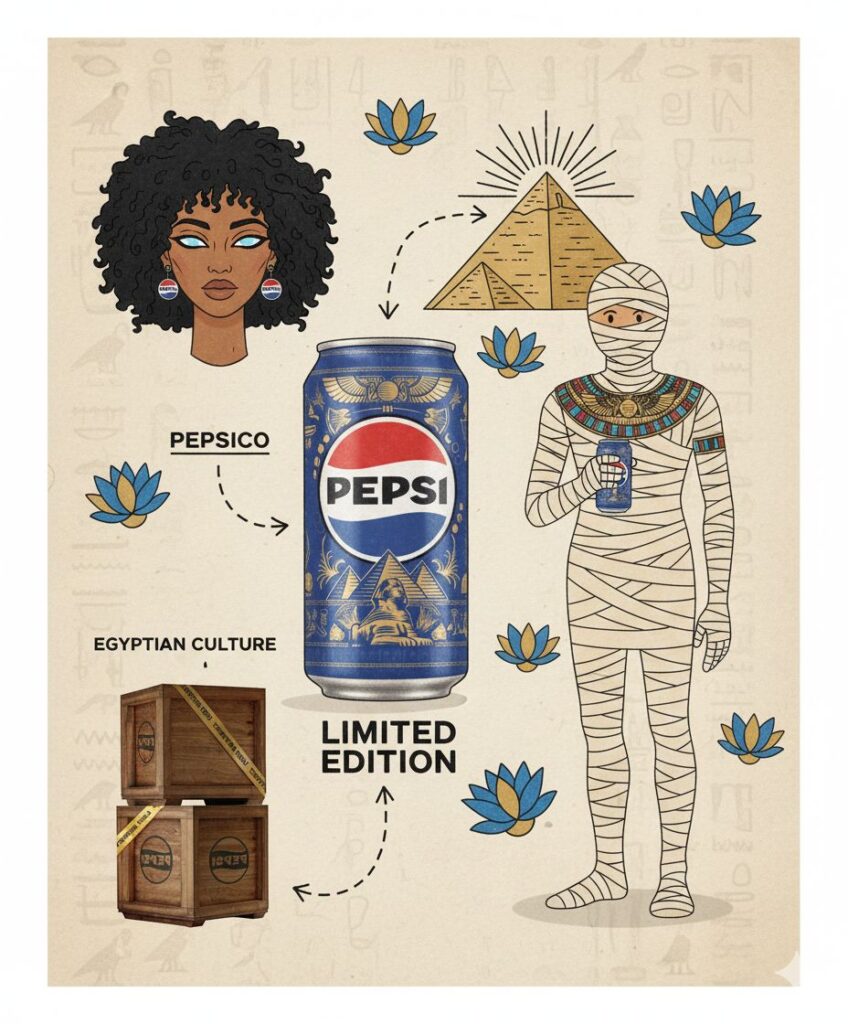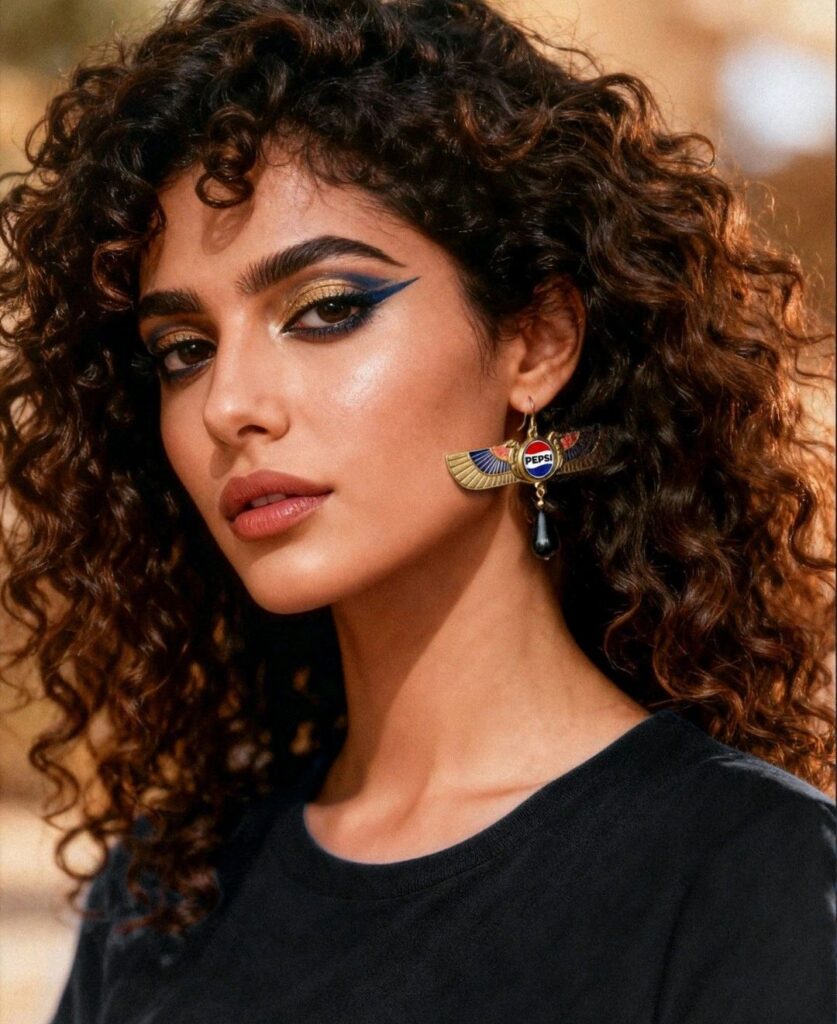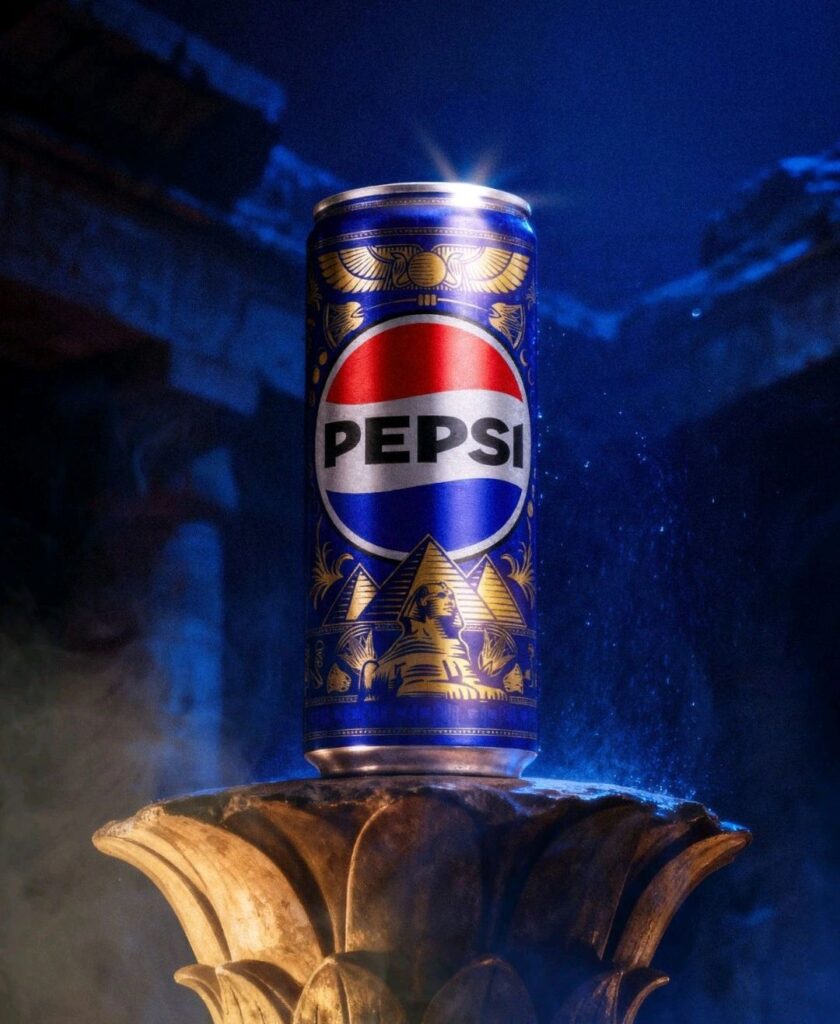Pepsi has released a limited-edition can inspired by Egypt’s rich cultural heritage, featuring motifs from ancient art, the Sphinx, and traditional patterns. The intricately crafted design blends modern branding with historical storytelling, earning widespread praise for its authenticity, emotion, and visual beauty. The can highlights Pepsi’s commitment to culturally rooted, thoughtfully crafted design.

Pepsi’s latest limited-edition can design has sparked widespread admiration across the creative and marketing worlds, proving once again that when storytelling meets design, the result can transcend traditional branding to become something far more evocative. Unveiled as a tribute to Egypt’s rich cultural legacy, the new packaging has been celebrated as one of the most visually compelling executions the brand has released in recent years—an artistic blend of history, identity, and contemporary design thinking. At first glance, the can stands out because of its intricate detailing, but a closer look reveals the layers of narrative woven into each element, demonstrating how design can become a bridge between eras, connecting the present with a civilization that helped shape the world.
The limited-edition can features motifs deeply rooted in Egypt’s visual heritage, reflecting an aesthetic that goes far beyond surface appeal. From illustrations inspired by ancient hieroglyphics to the iconic image of the Sphinx subtly embedded into the visual layout, each component of the design feels intentional and reverent. Instead of simply borrowing cultural cues for decorative effect, Pepsi’s design team approached the project with a kind of creative responsibility—an understanding that Egypt’s symbols carry centuries of meaning and emotional weight. This sensitivity is one reason the design has resonated so strongly. It demonstrates that branding can pay homage rather than merely capitalize on cultural narratives, acknowledging the depth of a history that continues to fascinate global audiences.
Design professionals have responded with full respect to the creative minds behind the project, noting the precision, thoughtfulness, and authenticity in how the elements were shaped. What makes the can particularly striking is not just the inclusion of Egyptian motifs, but the balance achieved between contemporary visual language and traditional artistic references. Pepsi’s global design philosophy has often emphasized boldness and youthfulness, yet here the brand allows history to take center stage. The ancient patterns and symbols are rendered with modern finesse, creating a can that feels both timeless and fresh—a rare combination in the fast-moving world of consumer goods.
The colour palette plays a significant role as well. While Pepsi’s signature blue remains foundational, the inclusion of gold, sandy tones, and intricate line-work echoes the textures and hues found in Egypt’s ancient temples and monuments. This juxtaposition of modern brand colours with historically inspired tones adds to the sense that the can is not merely a product, but a miniature canvas. It invites viewers and consumers to pause, examine, and appreciate—an increasingly uncommon reaction in a landscape where packaging is often designed to be glanced at rather than contemplated.
This connection between emotion and aesthetics lies at the heart of why the design has been hailed as “magic.” The can is not just a visual experiment; it is storytelling encapsulated in aluminum. It evokes memories of iconic Egyptian imagery—the Sphinx, pyramids, papyrus scrolls, and ornamental borders reminiscent of ancient craftsmanship. To many consumers, especially those with connections to the region, the design feels like a personal nod to identity and roots. To global audiences, it serves as a cultural window into one of the world’s most celebrated civilizations.
The timing of such a design also aligns with a broader shift in global branding, where companies increasingly recognise the value of cultural authenticity. Today’s consumers, especially younger demographics, gravitate toward brands that display awareness, sensitivity, and creativity in their campaigns. In a world filled with generic packaging and hyper-polished visuals, culturally grounded design offers something more meaningful. Pepsi’s limited-edition Egypt can stands as a reminder that brands can honour traditions while still speaking to modern sensibilities, crafting stories that linger long after the product has been consumed.

The release of the can also highlights the importance of craft in design. The sentiment expressed by those who worked on the project—“design isn’t made in a moment; it’s crafted with love”—captures the spirit behind such work. Great design is not rushed. It demands research, imagination, empathy, and a deep understanding of the cultural contexts being represented. It requires collaboration across designers, illustrators, cultural consultants, and brand strategists, all of whom must work in harmony to ensure the finished product respects history while appealing to the contemporary eye. This can, with its refined symbolism and meticulous execution, reflects that care.
In many ways, this packaging becomes a collectible object rather than a disposable one. Limited-edition cans are often used to mark occasions, celebrate partnerships, or generate social media excitement, but Pepsi’s Egypt tribute goes a step further by creating a piece of design that people want to preserve. Whether displayed on a shelf, photographed for social platforms, or kept as a memento, the can invites interaction beyond consumption. It transforms from packaging into a keepsake, an artifact of modern brand storytelling rooted in ancient traditions.
Marketing analysts point out that culturally inspired designs can be powerful tools for engagement, but they also come with risks if executed without authenticity. In this case, the global reaction suggests that Pepsi successfully navigated this terrain by grounding its design choices in genuine appreciation. The collaboration likely involved significant research into Egyptian symbols and visual history, ensuring that the motifs used were respectful and accurate. This attention to detail helps prevent misinterpretation and strengthens the emotional impact of the final design.
Pepsi’s move also fits into a growing trend among global brands to celebrate heritage and local pride. In regions such as the Middle East and North Africa, where cultural symbolism plays a key role in consumer identity, such initiatives are welcomed as gestures of respect and recognition. At the same time, they allow brands to expand their creative horizons, exploring artistic territories that might otherwise remain untouched in mainstream packaging design. This cultural-forward approach helps brands remain relevant while deepening connections with local audiences.

The success of the design also speaks to a broader truth about storytelling in modern branding. Narratives are no longer confined to advertisements or digital campaigns—they are woven into products, experiences, and even the smallest packaging elements. Today’s consumers appreciate when brands move beyond transactional relationships and instead create emotional or cultural value. A can like this does not simply sell a beverage; it sells a story, an appreciation of history, and an invitation to connect through design.
As the global creative community continues to celebrate this release, one thing becomes clear: Pepsi’s Egypt-inspired can is more than a marketing exercise. It captures the idea that design can honour the past while invigorating the present, preserving heritage in a form that is accessible and visually compelling. It challenges other brands to think more deeply about the cultural stories they choose to amplify, and how those stories can enrich their visual identities.
Ultimately, this limited-edition can reinforces a timeless principle—design crafted with love has the power to resonate in ways that transcend the product itself. It becomes a symbol of the emotional and artistic possibilities within branding, showing that when storytelling and design meet with intention, the result is nothing short of magic.








